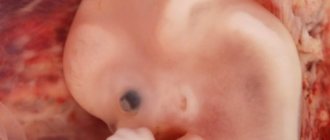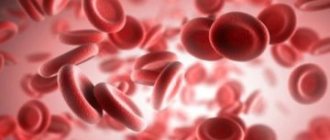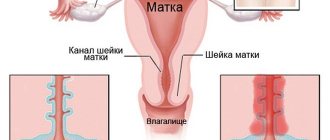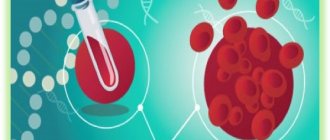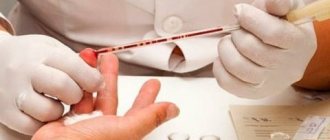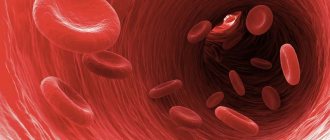Home — For the public
- Map of medical organizations
- Vaccination
- Clinical examination
- Fluorography
- Addresses and opening hours of clinics
- Emergency rooms
- Oncology
- Where to take an HIV test
- Healthy child's office
- Services
- Prevention of CVD
- Disease Prevention
- World Patient Safety Day
- Newspaper "Medical News"
- specialist
- School of Health
— Disease prevention
- HIV infection
- All about vaccination
- All about proper nutrition
- Hepatitis
- Flu
- Dementia
- Schoolchildren's health
- STD
- Tick-borne encephalitis
- Whooping cough
- Measles
- Legionellosis
- Meningococcal infection
- Oncology
- Acute intestinal infection
- Pediculosis
- First aid
- Pneumococcal infection
- Pneumonia
- Prevention of rabies
- Dependency Prevention
- Rotavirus infection
- Diabetes
- Cardiovascular diseases
- Injuries
- Tuberculosis
- Tularemia
- Physical activity
- Obstructive pulmonary disease
- Exotic infections
- Ecology
- Why is swimming in ponds dangerous?
- HIV infection
- Express help
- HIV is not a death sentence
- HIV prevention
- Interesting about HIV
— HIV is not a death sentence — HIV: the first symptoms, stages and development of the disease
The insidiousness of HIV and the consequences of infection with it is nothing more than the carelessness of the people themselves. Yes, indeed, HIV infection is a serious disease. To date, there is no vaccine against it and it is completely incurable. But with timely diagnosis and subsequent HAART (highly active antiretroviral therapy), the life expectancy of HIV-positive patients is no different from the average. Medicines taken throughout life inhibit the development of HIV infection and people live to a ripe old age - 70 - 80 years. Following the recommendations of specialists, they lead a normal lifestyle - work, get married, travel and even have healthy children. The main thing is to recognize the first signs of the disease in time and seek help.
The first signs of HIV infection
Self-medication is a bad habit. When we feel unwell, we diagnose ourselves and prescribe medications, thereby ignoring the symptoms in the early stages of HIV infection. And at this time, the virus is already actively attacking the cells of our immune system and destroying it. The following signs indicate the progression of the process.
- Enlarged lymph nodes - in the neck, groin, armpits.
- Candidiasis (thrush), including in the oral cavity.
- Night sweats.
- Prolonged diarrhea.
- Unreasonable nausea and vomiting.
- A sharp decrease in body weight.
- Fever.
- Skin rashes.
Very often, the first symptoms of HIV infection resemble ARVI and flu. The patient is feverish and experiences muscle pain and headaches. His joints ache, the mucous membranes of his mouth and pharynx become inflamed. But soon all the unpleasant symptoms go away on their own and the next stage of HIV infection begins, when the disease does not show itself in any way.
How does the disease manifest itself after a month?
After 1 month, the first bright symptoms of HIV, as a rule, are muffled, and the pathology continues to progress and destroy the immune system from the inside. HIV infection can manifest itself with the following symptoms, which initially appear sporadically, and over time develop into permanent conditions:
- prolonged colds and exacerbation of chronic ones;
- headaches and migraines (read about other possible causes of headaches here);
- increased fatigue and insomnia (a somnologist and neurologist will help you cope);
- depression and a feeling of apathy (consulting a psychologist will help you cope);
- digestive disorders and rapid loss of muscle mass;
- persistent diseases of the genitourinary system (thrush, endometriosis, erosion, and so on);
- exacerbating manifestations of herpes simplex and genital;
- damage to the skin and mucous membranes by multiple or single ulcers, pustules, rashes (for treatment, consult a dermatologist);
- ENT diseases, aggravated by manifestations of a painful cough (consults ENT);
- muscle pain and aches;
- increased sweating and dizziness (other causes of dizziness are described here).
The listed first signs of HIV in women can be either single or join each other, acquiring multiplicity, and have both mild and more pronounced manifestations.
If at the very beginning of infection the disease could not be recognized even by a blood test, then after 1 month a test for HIV infection shows the real picture. It is important not to ignore the first warning symptoms of HIV that occur at an early stage, especially if a woman is included in the so-called “risk group”:
- underwent a blood transfusion;
- got a tattoo, piercing;
- often changes sexual partners.
A woman should be wary of the duration of the symptoms that arose at the initial stage or the illogicality of their appearance (for example, digestive disorders without the slightest change in diet).
It should be remembered that when the first signs of HIV infection occur, in specialized AIDS prevention centers you can take both a rapid HIV test and a detailed laboratory analysis on a completely anonymous basis.
Stages of HIV infection
HIV is a human immunodeficiency virus. Penetrating into the body, it attacks the cells of the immune system, which causes the development of HIV infection - a slowly progressive disease. Without adequate treatment, it develops into AIDS - acquired immune deficiency syndrome. A clear distinction between these concepts helps to understand what happens to the human body at each stage of the disease.
| Disease stage | Duration | What happens in the body | Symptoms |
| Window period | from 2 to 12 weeks (with weakened immunity – 12 – 24 weeks) | the so-called incubation period, when infection has already occurred and the virus attacks the cells of the immune system | no symptoms |
| Acute phase | 3 to 6 weeks from infection | the virus actively replicates, the viral load increases, which is accompanied by a violent reaction of the body | see the first signs and early stages of HIV infection |
| Latent period | on average – 8-10 years | a conditional balance is established between the rate of HIV reproduction and the response of the immune system | there is an increase in lymph nodes, there are no other symptoms |
| Pre-AIDS | 1-2 years | cellular immunity is suppressed | relapses of herpes, candidiasis, stomatitis |
| AIDS | without treatment – 1-2 years | the terminal stage of HIV infection, when the person’s immune system is practically destroyed | tumors and opportunistic infections that cause the development of tuberculosis, meningitis, encephalitis, pneumonia and other HIV-associated diseases |
Thus, from the moment when the first signs of HIV infection appear until the moment when the disease enters the latent stage, very little time passes. It is very important not to miss this period of time, since for the next few years (8-10 years) the person will live, feel normal and not even suspect that he is sick with HIV infection. At the same time, it infects other people during unprotected sexual intercourse. But most importantly, he wastes precious time. After all, without treatment, the inevitable stage of development of HIV infection occurs - AIDS.
Opportunistic infections in AIDS
Pneumocystis pneumonia is considered one of the most common cases of acquired immunodeficiency syndrome. It is caused by Pneumocystis, a parasite that can enter the respiratory tract of a healthy person, but does not cause pneumonia.
Clinically, this disease occurs as atypical pneumonia. The temperature rarely reaches the level of fever. The image shows large areas of darkening. The patient has a painful cough. A feature of this pneumonia is the positive dynamics when prescribing sulfonamide drugs - Biseptol or Co-Trimoxazole.
Toxoplasmosis can cause neuroinfection both in patients in the AIDS stage and in earlier stages of the disease. The differences between these situations are due to the location of the parasite. Acquired immunodeficiency syndrome is characterized by penetration of the pathogen into the brain tissue itself. This is manifested by encephalitis with pronounced general cerebral and even focal disorders. Patients complain of severe headaches and seizures resembling those of epilepsy. Focal changes depend on what structure and what location will be affected.
Development of the disease: from infection to AIDS
Human immunodeficiency virus belongs to the family of retroviruses. At its core, it is a virion - a particle consisting of an envelope and a protein-nucleic acid complex. Outside the host cell, it shows no signs of biological activity. But as soon as the HIV virion attaches to a living immune cell (T-lymphocyte), it merges with it and transfers its genetic information to it. An immune cell infected in this way is unable to perform its functions and is a favorable environment for the replication of virions - HIV begins to create its own copies. New viral particles bud off, enter the bloodstream and find a new host cell. The old virus-carrying cell dies, and new T-lymphocytes are targeted. And so on ad infinitum! Until the immune system is completely destroyed. During this time, the human body goes through all stages of the development of the disease.
- HIV enters the body - infection with the virus.
- Virions begin to attack T-lymphocytes - the incubation period.
- The number of replicated virions increases sharply – the acute phase.
- The rate of HIV reproduction is balanced by the body's immune response - the latent stage, in which there are no symptoms.
- The number of replications increases, and the number of healthy T-lymphocytes steadily decreases - the immune system does not perform its functions and AIDS develops.
Thus, infection and HIV infection are not fatal to humans. Antiretroviral therapy (HAART) suppresses the activity of the virus, limiting the progression of the disease. In fact, the patient is constantly in the latent stage and leads a normal lifestyle.
Forecast
It is important to recognize the disease in time. If the patient does not undergo antiretroviral therapy, then life expectancy will be no more than 12 months.
Mortality from the disease in developed countries is reduced by 80%.
With timely treatment of HIV, life expectancy is 20 years. It depends on the following factors:
- Lifestyle;
- compliance with medical orders;
- presence of other diseases;
- state of immune defense;
- sensitivity to drugs.
How long do people live with HIV?
In this case, everything depends on three important factors - the timing of the diagnosis, the treatment performed and the general health of the patient. The statistics on HIV infection and AIDS provide the following figures.
- Timely diagnosis and subsequent HAART – life expectancy is 20-50 years.
- Detection of HIV infection in late stages and subsequent HAART – 10-40 years.
- Undiagnosed infection without treatment – 9-11 years.
- AIDS without treatment – 6-9 months.
An equally important factor influencing the life expectancy of HIV-infected patients is the general state of health and immunity. Naturally, people with strong immunity, who do not have chronic diseases and congenital pathologies, will live longer. At the same time, a weakened body is less resistant to the virus. Therefore, in addition to HAART, all HIV-positive patients are recommended to have a healthy lifestyle and proper nutrition. They must protect themselves from infectious and colds. Strengthen your immune system, take care of your body and undergo regular examinations.
Ways of infection and how to protect yourself

Surely there is not a single person on the entire planet who would like to become a patient in the HIV department. Therefore, it is very important to take care of yourself, your health, and pay attention to various abnormal symptoms that resemble the first signs of HIV development. The immunodeficiency virus is found primarily in human blood, a man’s sperm, a woman’s vaginal secretions, and her breast milk. From this we can conclude that HIV infection is transmitted:
- sexually - people who frequently change sexual partners and practice unprotected sex are in real danger;
- vertically - from an HIV-infected mother to her child during pregnancy and through breast milk;
- through blood - in the “risk zone” are people who have received donor blood transfusions (it could be HIV-infected), drug addicts who use injecting drugs and use a common syringe for everyone.
HIV is not transmitted either through everyday contact through the use of shared objects, or through airborne droplets, or through hugs and handshakes; it is not transmitted by blood-sucking insects. Still, it is worth using individual hygiene products, leading a healthy lifestyle, choosing partners carefully and undergoing regular medical examinations. Do not try to analyze the first symptoms of HIV on your own, no matter what they seem to you.
Doctor's advice
A blood test for HIV is included in the list of mandatory tests during medical examinations—planned at work, medical examination, and medical examination. This analysis is taken in case of admission to a hospital of any profile, as well as when a pregnant woman is registered with the LCD. Every year, an increasing number of the population is diagnosed with HIV, which significantly increases the chances of starting treatment in the early stages of the disease.
Victoria Druzhikina Neurologist, Therapist
If you have any doubts about HIV infection or treatment for the disease, you can consult an immunologist or infectious disease specialist online, without registration and on an anonymous basis.
How to test your body for HIV?
To do this, you need to know your HIV status. To determine it, indirect and direct tests are carried out to detect antibodies to HIV and the virus itself. To carry out the tests, you need to donate blood for an HIV test. You can do this anonymously!
How long after can a test be carried out if there was a risk of infection?
You can donate blood for analysis 2-3 weeks after the fact of possible infection. However, it is necessary to take into account that due to the individual characteristics of the immune system of a particular person, the test result may be unreliable, since the number of antibodies to HIV will still be too small for an accurate diagnosis of the disease.
How long does it take for HIV infection to appear in the blood?
To obtain a reliable test result, it is necessary that at least 3 months have passed since the infection. In rare cases, the appearance of antibodies characteristic of HIV takes longer - 4-6 months.
If the result is negative after 3 months, is it necessary to do a repeat test?
If a negative result was obtained, but you are sure of the infection, then it is better to repeat the test after 6 months.
HIV tests, prices, when to get tested
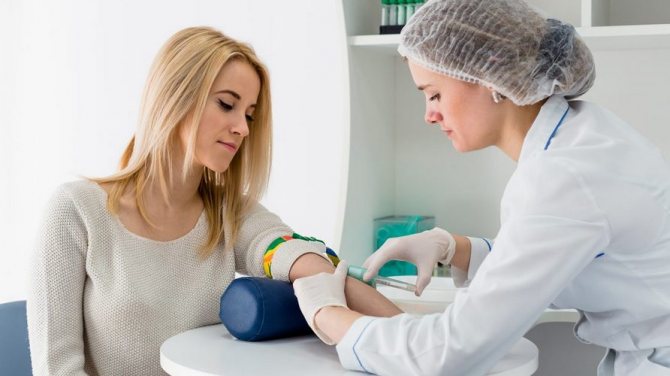
According to testing standards, blood for HIV is donated three times after the threat of infection - 3, 6 and 12 months from the moment of suspected infection. It is not at all necessary to do this at home using pharmacy tests or in private clinics. The best decision would be to contact the AIDS CENTER, which is in every city, and describe the situation to the doctor. The doctor will decide whether emergency prevention of HIV infection is needed (antiviral drugs are prescribed) or whether there is no threat to health. Examination and treatment when visiting such a center are free of charge.
Victoria Druzhikina
Neurologist, Therapist
You can donate blood yourself in a private clinic; the average cost of the test is 400 rubles.
Life expectancy with timely detection of the virus and early initiation of therapy does not differ from the life expectancy of a person without HIV infection. Without treatment, the condition enters the AIDS phase, which is approximately 5-10 years before death.
This article has been verified by a current qualified physician, Victoria Druzhikina, and can be considered a reliable source of information for site users.
Bibliography
1.https://aidsvolgograd.ru/wp-content/uploads/2017/08/Clinical-protocols-HIV-2017.pdf 2. https://pharmacta.ru/d/2015-10-30_4994.pdf https: //www.rcrz.kz/docs/clinic_protocol/2015/Therapy/Infectious%20diseases/3%20HIV%20u%20adults.pdf
Rate how useful the article was
4.3 12 people voted, average rating 4.3
Did you like the article? Save it to your wall so you don’t lose it!
What should you do if there is a possibility of infection?
In other words, how to prevent infection? For this, there are certain prevention methods that, if followed correctly, provide an almost 100% guarantee of protection.
What do we have to do:
- Use condoms during all sexual contacts, even if you only have one regular partner. Ask yourself a question: am I 100% sure of her (him)? If so, that's good. But are you sure about his (her) former partners? But HIV does not appear immediately; sometimes the person himself may not know that he is infected for many years.
- Avoid casual and questionable sexual contacts. This is very dangerous and even a condom is not always able to protect.
- If you are an HIV-positive woman and are pregnant, see an infectious disease doctor and follow all his recommendations. You should also give up natural childbirth and undergo the procedure of fire section, this will reduce the risk of infection of the baby during childbirth. If the baby has already been born, feed it artificially, since with mother’s milk there is a possibility of the virus entering the newborn’s body.
- If your partner is HIV-positive, he must undergo antiretroviral therapy. This will reduce the risk, since the viral load when exposed to these drugs is reduced, and therefore the risk of infecting a partner will be reduced.
- Stop using injecting drugs, and if you cannot do this, use only disposable syringes.
- Do not allow anyone to use your personal hygiene products: razor, towel, toothbrush, soap, etc.
- Be careful when visiting beauty salons, tattoo parlors, hairdressers, etc. You must be sure that the instrument in the salon is processed and sterilized properly.
Attention! During unprotected sexual contact, a woman is at greater risk, since the volume of sperm that enters her body is several times greater than the volume of vaginal lubricant, which means the concentration of infectious agents will be several times higher.
What preventive measures will help protect against HIV infection are described in the video:
